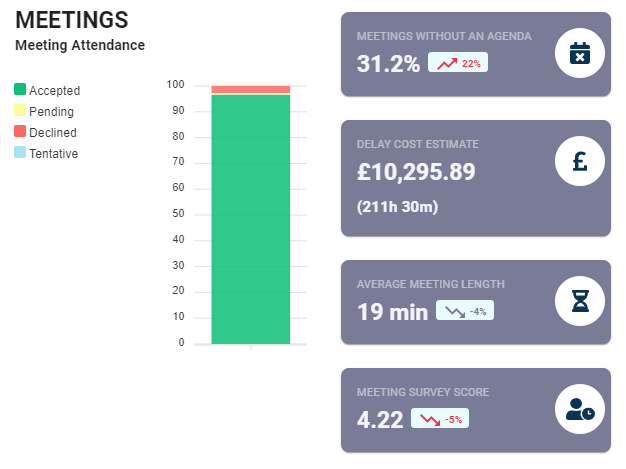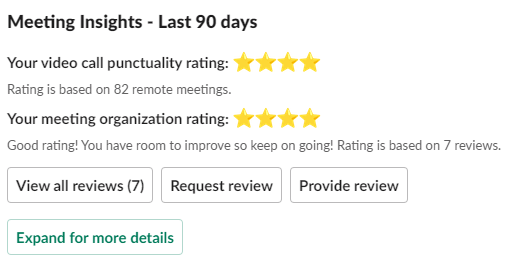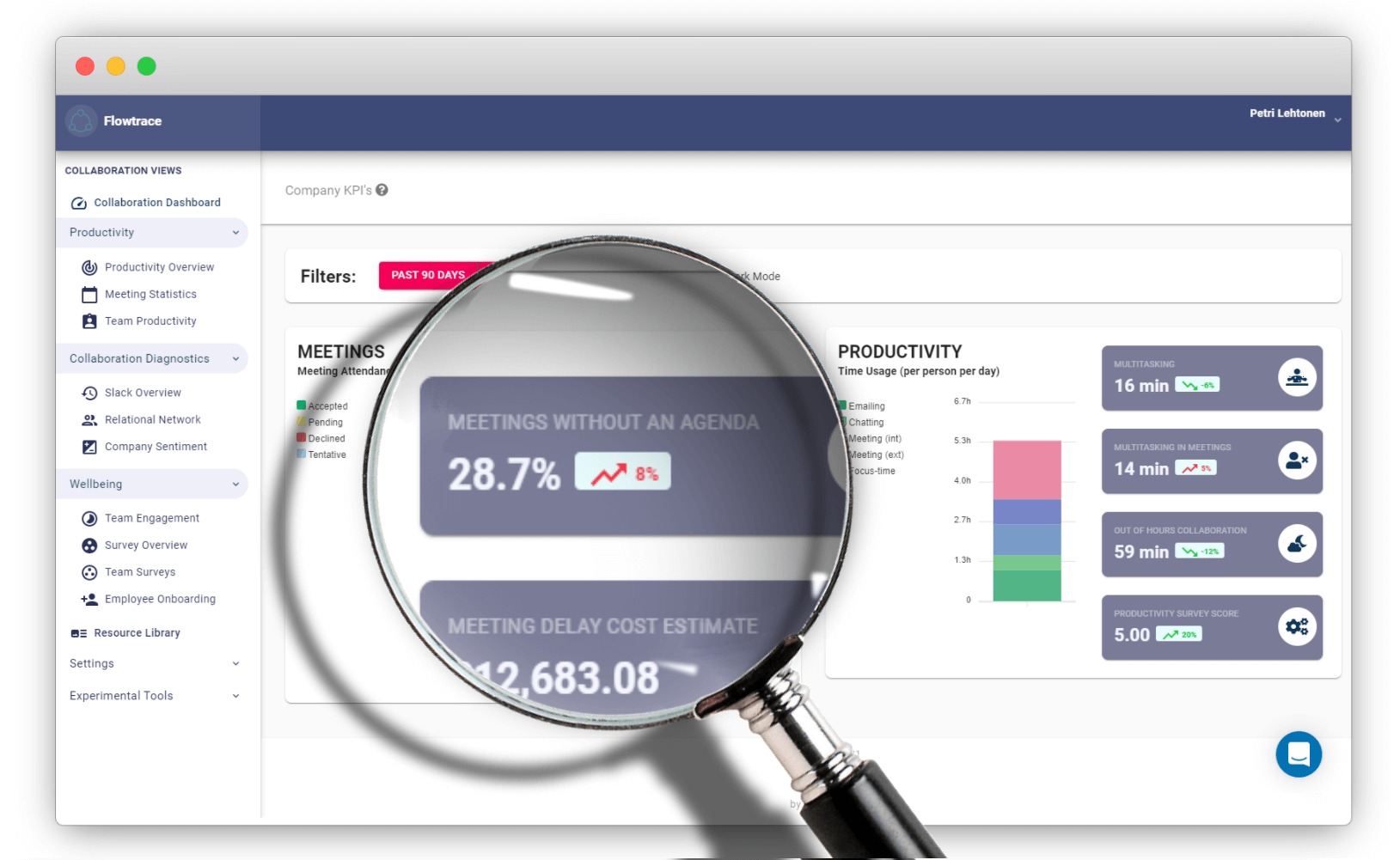Why 89% of No-Meeting Policies Fail: Data-Driven Alternative Strategies
Discover why no-meeting policies fail and proven alternatives. Reduce meeting overload by 60% with analytics-driven strategies that actually stick.
Cutting recurring meetings can boost productivity and employee well-being. Learn the benefits, downsides, and strategies for a meeting-free work environment.
Recurring meetings are a staple in many businesses, but their frequency and necessity often go unquestioned. While they can be essential for maintaining communication and coordination, too many meetings can lead to wasted time and reduced productivity. Organizations should aim to assess meeting schedules, identify opportunities to cut down on unnecessary meetings and implement more efficient communication strategies. By doing so, they can reclaim valuable time and foster a more productive work environment.
Shopify, for example, announced they were cutting all recurring meetings from their company in an effort to increase productivity and creativity among their employees. This bold move has the potential to offer numerous benefits for both the company and its employees. It does not come without a significant risk of downsides and should be considered carefully.
In case you are considering a similar policy in your own organization, it is important to carefully analyze the data and gather input from employees in order to make an informed decision. By considering the potential benefits and downsides and implementing alternative methods of communication and collaboration, you can determine the best course of action for your company and your meeting culture.
While it may seem counterintuitive at first, eliminating recurring meetings has the potential to offer numerous benefits for your company and its employees.

One potential benefit is that it can help to reduce the meeting overload, namely the number of unnecessary or unproductive meetings that your employees are required to attend. These types of meetings can often be time-consuming and can distract employees from their actual work. By cutting these meetings, employees will have more time to focus on their tasks and projects, which can lead to increased productivity.
Another benefit of cutting recurring meetings is that it can foster a more collaborative and creative work environment. When employees are not constantly in meetings, they have more time to work independently or in small groups to come up with new ideas and solve problems. This can lead to greater innovation within the company and help it to stay ahead of the competition.
In addition to increasing productivity and creativity, cutting recurring meetings can also improve the overall work-life balance of your employees. With fewer meetings on their schedules, employees will have more time to spend on personal tasks and pursuits, which can lead to improved mental health and overall well-being.
One potential benefit to your staff is that it can lead to a greater sense of ownership and empowerment among your employees. By giving employees more autonomy and allowing them to take ownership of their work, you can foster a more engaged and motivated workforce.
Another benefit is that it can help to reduce stress and improve mental health among your employees. With fewer meetings on their schedules, employees will have more time to relax and recharge, leading to a better work-life balance and improved mental well-being.
Finally, cutting recurring meetings can also improve the overall culture of your company. By creating a more flexible and autonomous work environment, you can attract and retain top talent and create a positive, supportive culture that employees are proud to be a part of.

Overall, cutting recurring meetings has the potential to offer numerous benefits for your company. By reducing the number of unnecessary meetings and fostering a more collaborative and creative work environment, you can increase productivity and drive innovation. At the same time, your employees will have more time to focus on their work and enjoy a better work-life balance.
Here is a list of potential downsides for the organization to consider when cutting recurring meetings:
Communication breakdown: Without recurring meetings, it may be more difficult for employees to stay informed about important updates and changes within the company. This could lead to a breakdown in communication, which could negatively impact the efficiency and effectiveness of the team.
Difficulty adapting to change: If the company decides to change its approach or direction, it may be more difficult to communicate these changes and get everyone on board without the use of recurring meetings.
Lack of accountability: Without recurring meetings, it may be more difficult to hold employees accountable for their work and progress. This could lead to a decrease in productivity and a lack of follow-through on tasks and projects.
Decreased sense of community: Recurring meetings can serve as a place for employees to come together and connect with one another. Without these meetings, employees may feel less connected to their colleagues and the company as a whole.
Loss of structure: Recurring meetings can provide a sense of structure and organization to an employee's workday. Without these meetings, employees may feel less grounded and may struggle to stay on track with their work.
It's worth carefully considering these potential downsides and ensuring that adequate measures are put in place to address any negative impacts that may arise.
There are specific potential downsides for individual employees to consider when cutting recurring meetings:

When you are deciding meeting policies like this, you should consider these potential downsides and raise any concerns they may have with management in order to ensure a smooth transition to a meeting-free work environment.
When a company is considering setting a policy to cut recurring meetings, there are a number of factors that they should take into account in order to make an informed decision.
Here are some things that a company should consider when approaching this decision:

As it is evident, it is important for a company to carefully consider all of these factors and gather as much relevant data as possible in order to make an informed decision about cutting recurring meetings. By taking a thoughtful and data-driven approach, the company can maximize the potential benefits of this policy while minimizing any negative impacts.
Reducing the number of unnecessary meetings is crucial for enhancing productivity and efficiency within an organization.

Here are some strategies to achieve this:
Assess Current Meeting Necessity: Regularly evaluate the purpose and effectiveness of recurring meetings. Eliminate those that do not add value or can be replaced with more efficient communication methods.
Leverage Technology: Utilize tools like Flowtrace’s meeting cost calculator to identify and quantify the cost of meetings. This data helps in making informed decisions about which meetings to keep and which to cut.
Implement Alternative Communication Channels: Encourage the use of project management tools, instant messaging, and collaboration platforms to reduce the need for meetings. This ensures that necessary communication occurs without disrupting work with frequent meetings.
Set Clear Agendas and Objectives: For necessary meetings, ensure that each one has a clear agenda and defined objectives. This keeps meetings focused and efficient, reducing their duration and frequency.
Empower Autonomous Work: Foster a culture of autonomy where employees are trusted to make decisions and collaborate without needing constant meetings. This can lead to more proactive and engaged employees.
By following these strategies, organizations can significantly reduce the number of unnecessary meetings, leading to improved productivity and a more efficient working environment.
When considering the decision to cut recurring meetings, it is important for a company to find a balance between the potential benefits and downsides. One way to do this is by using a tool like Flowtrace, a company analytics platform that analyzes calendars to identify meetings that may be unnecessary or unproductive.
By using Flowtrace, a company can gain insight into the types of meetings that are taking up the most time and resources, and make informed decisions about which meetings to cut. This can help to ensure that the company is able to maximize the benefits of cutting recurring meetings while minimizing any negative impacts.
In addition to helping a company identify the meetings to cut, Flowtrace can also provide real-time data on the impact of this policy on wider collaboration within the organization. By tracking the number and duration of meetings, Flowtrace can help a company understand the impact of cutting recurring meetings on communication and collaboration among employees.
Discover why no-meeting policies fail and proven alternatives. Reduce meeting overload by 60% with analytics-driven strategies that actually stick.
Enhance deep work productivity with meeting analytics. Learn how to reduce unnecessary meetings and boost focus to drive progress and innovation.
Optimize meetings with Flowtrace Meeting Analytics to address common pain points, enhance efficiency, and drive team engagement. Learn how to improve...